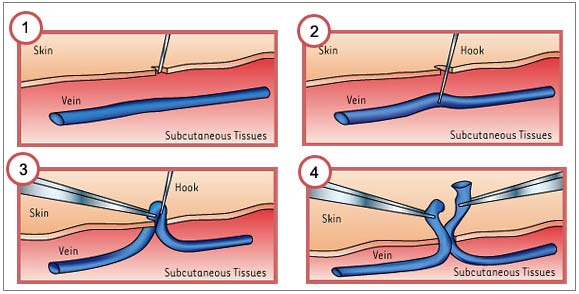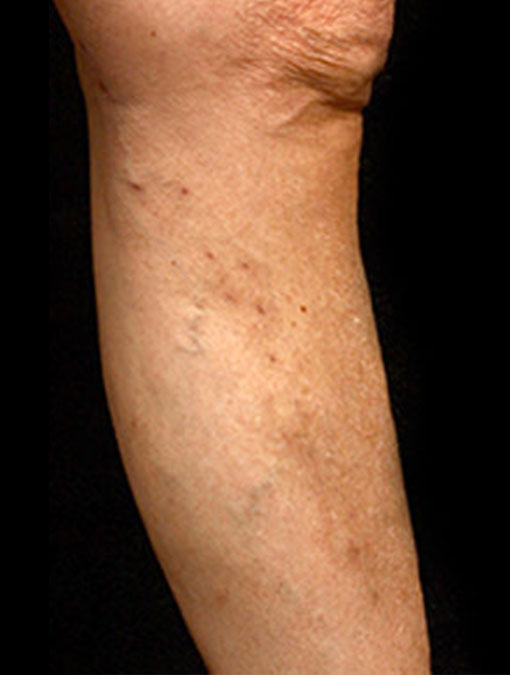Compression Stockings
There are a few conservative treatments that can improve symptoms. The most effective is compression stockings. These stockings will apply a specific amount of pressure to your legs, improving the blood flow in your veins from your feet back to your heart. Many patients find very good symptomatic relief when they wear compression stockings. The other conservative treatments include elevating your feet at the end of the day and walking.

Radio Ablation RFA (ClosureFast™)
Microphlebectomy
Ambulatory phlebectomy is a procedure done in the office to remove small varicose veins. This procedure is typically only necessary if the veins are not amenable to either endovenous ablation or sclerotherapy. The varicose vein may be in a location that is not treatable by endovenous ablation, and sometimes the vein is too large to be treated with just sclerotherapy.
This procedure is performed in the office, using local anesthesia. Small incisions are made in the area of the vein, and then a special hook tool is used to remove the vein. The incision is closed and bandages are applied.

Venaseal®
The VenaSeal® Sapheon Closure System eliminates superficial varicose veins that cause these symptoms. To use the system, a trained vein care professional inserts a catheter directly into the diseased vein and injects the VenaSeal® adhesive, which is a clear gel that polymerizes into a solid substance. Ultrasound imaging is used to ensure proper placement of the catheter and gel. When the vein is sealed shut, blood is naturally rerouted by the body through healthier veins in the area. With this new system, there is no need for sclerosants, lasers, radio frequency waves, skin cutting or “vein stripping.” This allows patients to return to their usual activities quickly, with less bruising, and with a reduced risk of nerve injury as can sometimes occur with heat-based procedures. Some side effects may occur, such as tingling or vein inflammation (phlebitis), as occur with most vein treatment procedures. The FDA reviewed the safety and efficacy data on the VenaSeal® system and found it to be safe and effective for the treatment of superficial varicose veins of the legs.
Ultrasound-Guided Foam Sclerotherapy
Sclerotherapy is a popular method of eliminating varicose veins and spider veins in which a solution, called a sclerosing agent, is injected into the veins. The sclerosing agent irritates the inside of the vein, causing the blood to clot and the vein to scar. The body is then able to find alternate pathways for your blood to return to your heart. The scarred vein is absorbed by the body, eliminating the painful or unsightly superficial veins.
The number of treatments needed to clear or improve the condition differs from patient to patient, and depends on the extent of varicose and spider veins present. One to six treatments may be needed, with an average of three to four treatments.
Take Our Online Vein Assessment
Take Our Online Vein Assessment
Before & After




“I had a pleasant experience I really appreciate how fast I was back to my self after my surgery. I never had to wait long to be seen. Everyone was pleasant and helpful. Thank you.”
“Dr. Samuel has a very busy practice because he is a very skilled surgeon. If you want a top doc, chose him.”
